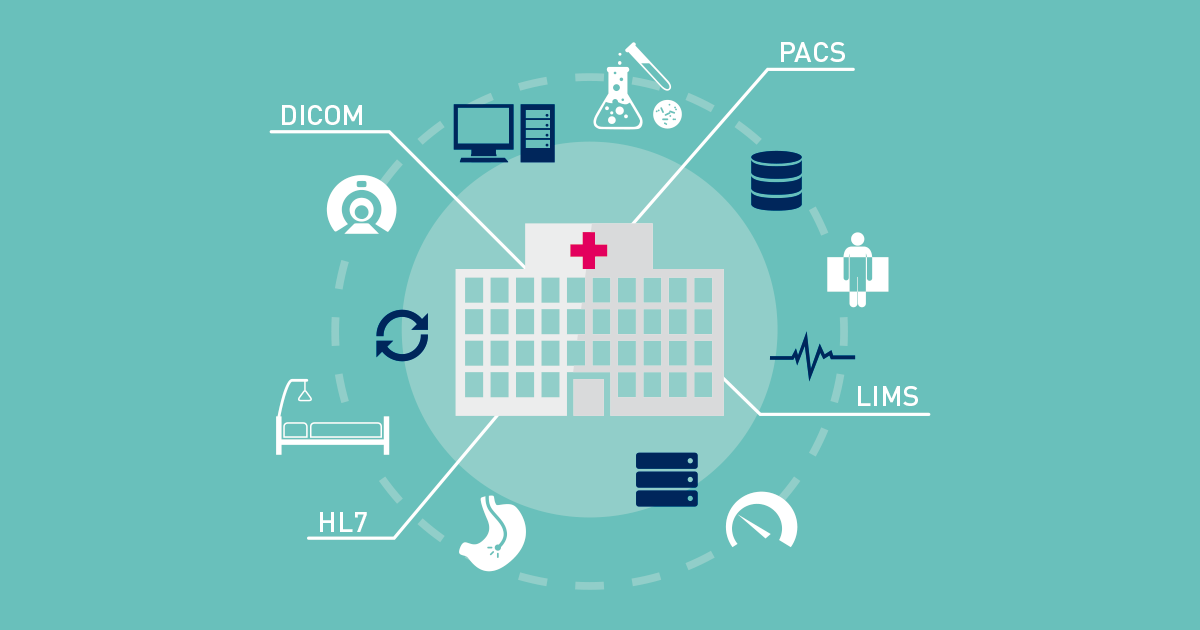In healthcare facilities, IT teams are increasingly being tasked with expanding their monitoring beyond the usual network components – routers, switches, firewalls, and so on – to incorporate healthcare devices and systems. There are many challenges to this, and so for those teams just getting started, it’s all about the quick wins. Steve Guthman, who has been working in medical IT for several decades, has some advice on where to start. Listen to the full podcast episode to hear Steve talk about leveraging DICOM and HL7 to monitor medical IT (or read on below for some key insights).
DICOM and HL7
While there are several standards present in the medical tech industry, two of the biggest are DICOM (Digital Imaging and Communications in Medicine) and HL7 (Health Level 7). And it is exactly these standards that IT teams can utilize to get a quick grip on their infrastructure.
Monitoring with DICOM
Just about every modality (imaging device) in healthcare technology today utilizes DICOM, even if each manufacturer puts their own spin on the standard (usually in terms of special DICOM tags). Therefore, it stands to reason that DICOM can be leveraged to monitor the modalities, right?
 Well, yes and no. It’s possible, but modalities are often closed systems, or they come with their own proprietary tools for monitoring them. This makes it difficult to incorporate imaging devices into a holistic monitoring strategy that includes other components like network and IT devices. As Steve explains: “These modalities are typically Linux boxes, hardened boxes, and many of them are not pingable. They're on the network, they may have a static IP, but a traditional network ping may be turned off.”
Well, yes and no. It’s possible, but modalities are often closed systems, or they come with their own proprietary tools for monitoring them. This makes it difficult to incorporate imaging devices into a holistic monitoring strategy that includes other components like network and IT devices. As Steve explains: “These modalities are typically Linux boxes, hardened boxes, and many of them are not pingable. They're on the network, they may have a static IP, but a traditional network ping may be turned off.”
However, Steve believes that monitoring with DICOM is more than only monitoring the modality itself. “Images have got to be stored somewhere. They've got to be viewed. They've got to be archived. You may want to send them to an AI application, or a 3D rendering application”.
Here's the bottom line, according to Steve: “Every application that is listening for DICOM could and really should be monitored. Make sure everything's listening; make sure transmissions are happening. And most important, make sure they're happening at an expected speed”.
As an example, Steve mentions the C-ECHO command in DICOM, which can be used to check on devices listening for DICOM messages.
Another advantage of monitoring with DICOM is that you will get a picture of many different touch points across the infrastructure. For example: transferring images to AI applications for analysis is usually done with DICOM. Same with 3D rendering. Steve recently made a list of over 20 different types of applications in medical imaging alone that rely on DICOM, and that list is growing. So DICOM can play a part in monitoring processes that involve several applications and systems.
HL7 for monitoring medical systems
On the administration side, there are systems for checking patients in, passing patient data around the hospital, and so on. HL7 is a common protocol used for communication between these systems.
Steve gives an example of how central HL7 is to administration: “Let’s say you break your foot, and you go to an emergency room. You go to the front desk, you check in, and they're going to key in your demographics. Let's say they decide that they want some lab work done on you, and maybe an X-Ray. After your demographics are keyed into that hospital information system, they will be sent to a lab system, and they'll be sent to a radiology system.”
So even though each department in a hospital has different systems, the information is still sent back and forth using HL7. HL7 also has the advantage that it is agnostic to coding languages and databases. All of this makes it useful for monitoring digital hospital processes.
Leveraging DICOM and HL7 for quick wins
For Steve, monitoring the processes around medical imaging is where IT teams should start.
“You really need to focus on some areas that you can conquer,” says Steve. “And for me, it's medical imaging. You need some quick wins, and the quick win with DICOM is obviously the modalities. And then you can go deeper into all the other DICOM applications. And at the same time, I'd probably go after monitoring (patient imaging) orders with HL7.”
It's something we've also written about before too, in this blog post: Monitoring Your Healthcare Workflows
So many insights in one episode
For the entire discussion with Steve Guthman, take a listen to the full podcast episode. He gave so many key insights, including current trends in medical IT and how to deal with decision makers in healthcare facilities. And while you’re at it, subscribe to The Monitoring Experts podcast wherever you listen to podcasts!
For more information on Steve Guthman, visit his website.
 Published by
Published by 












